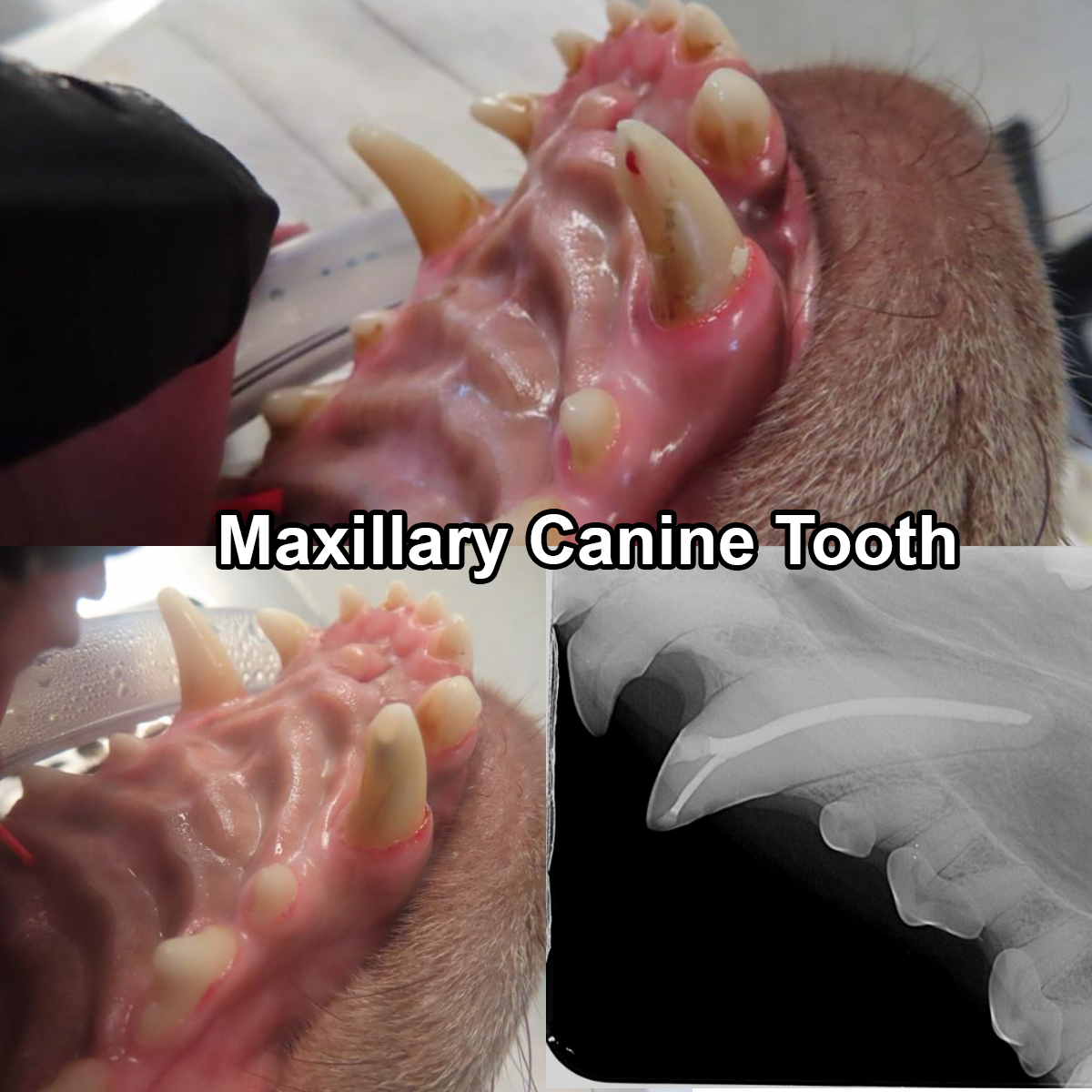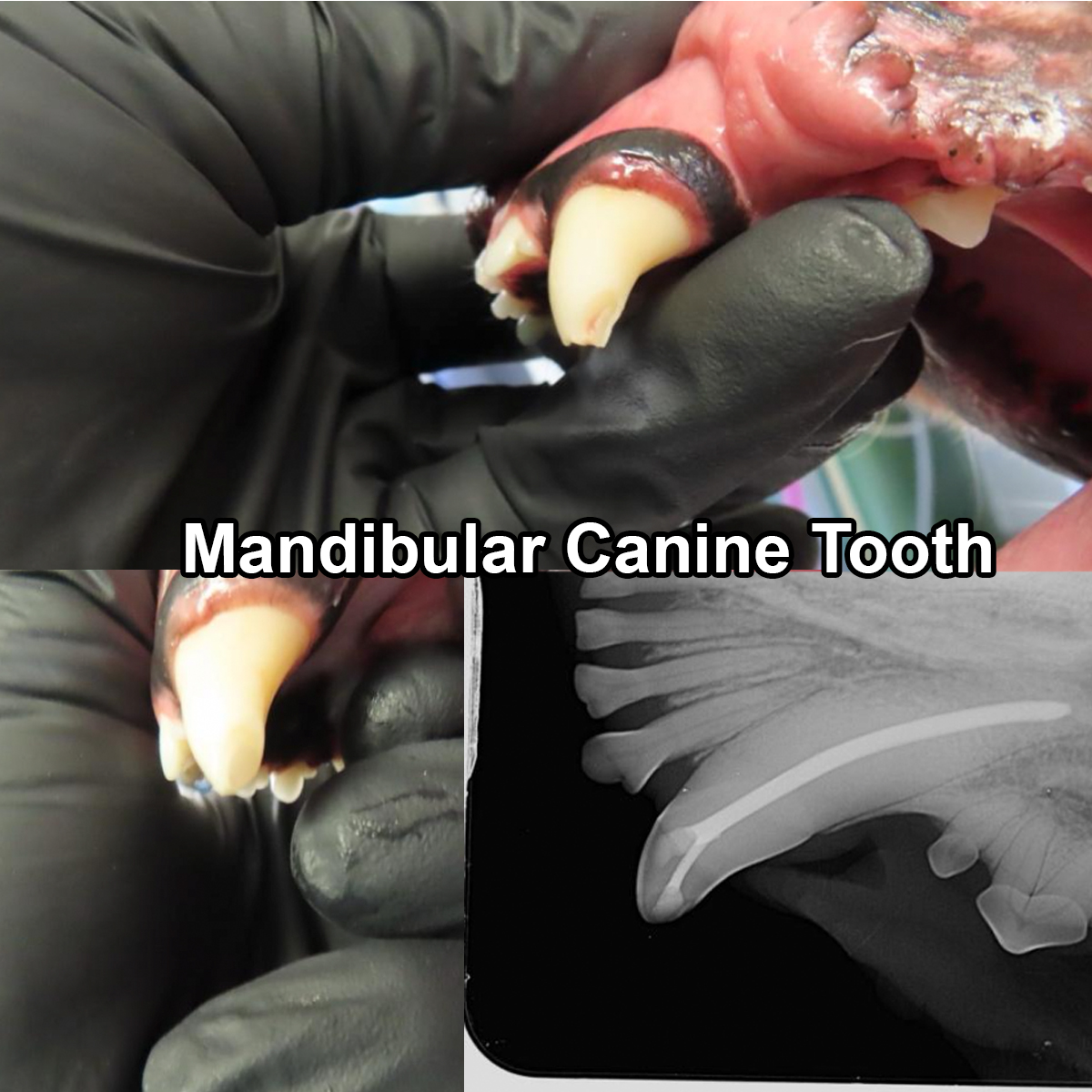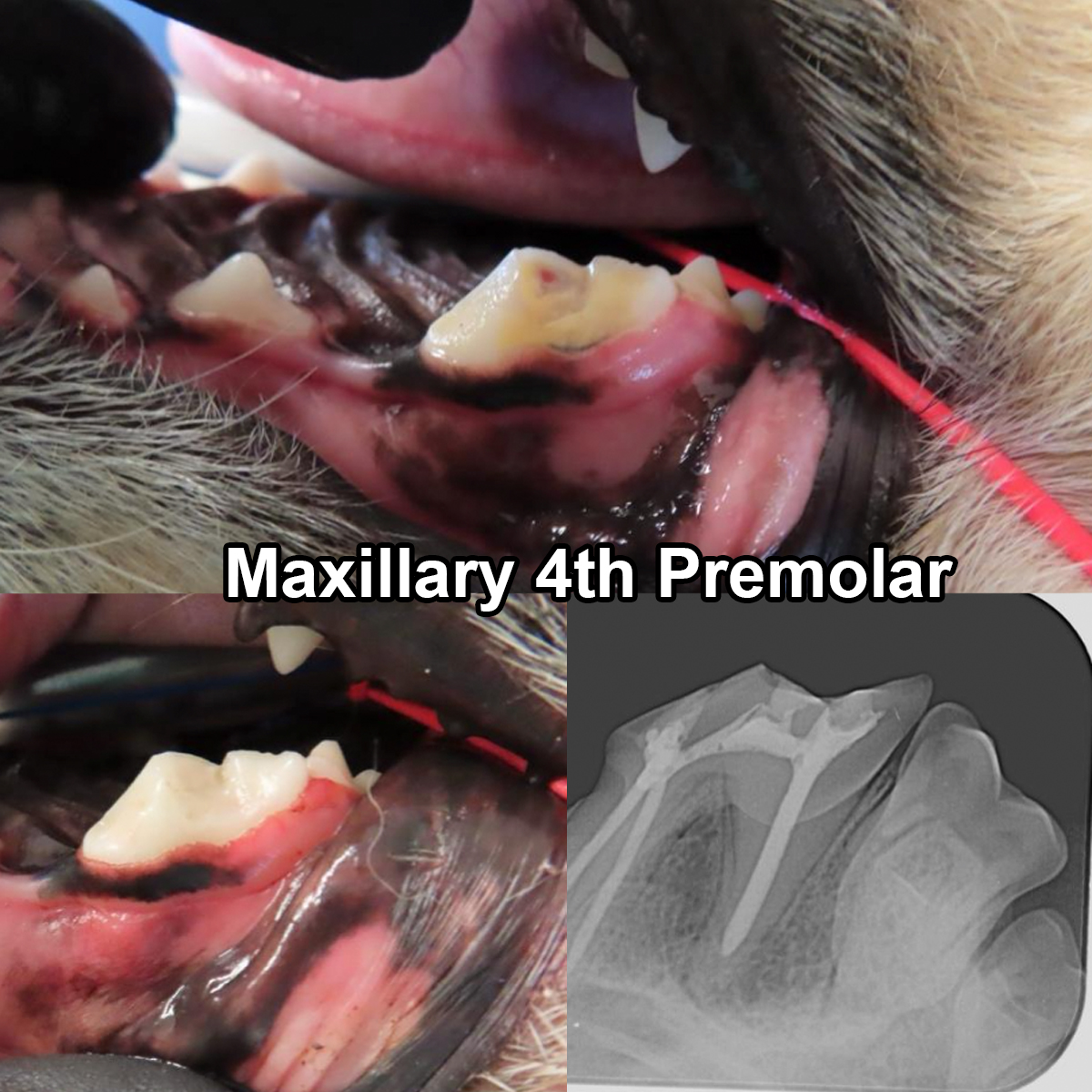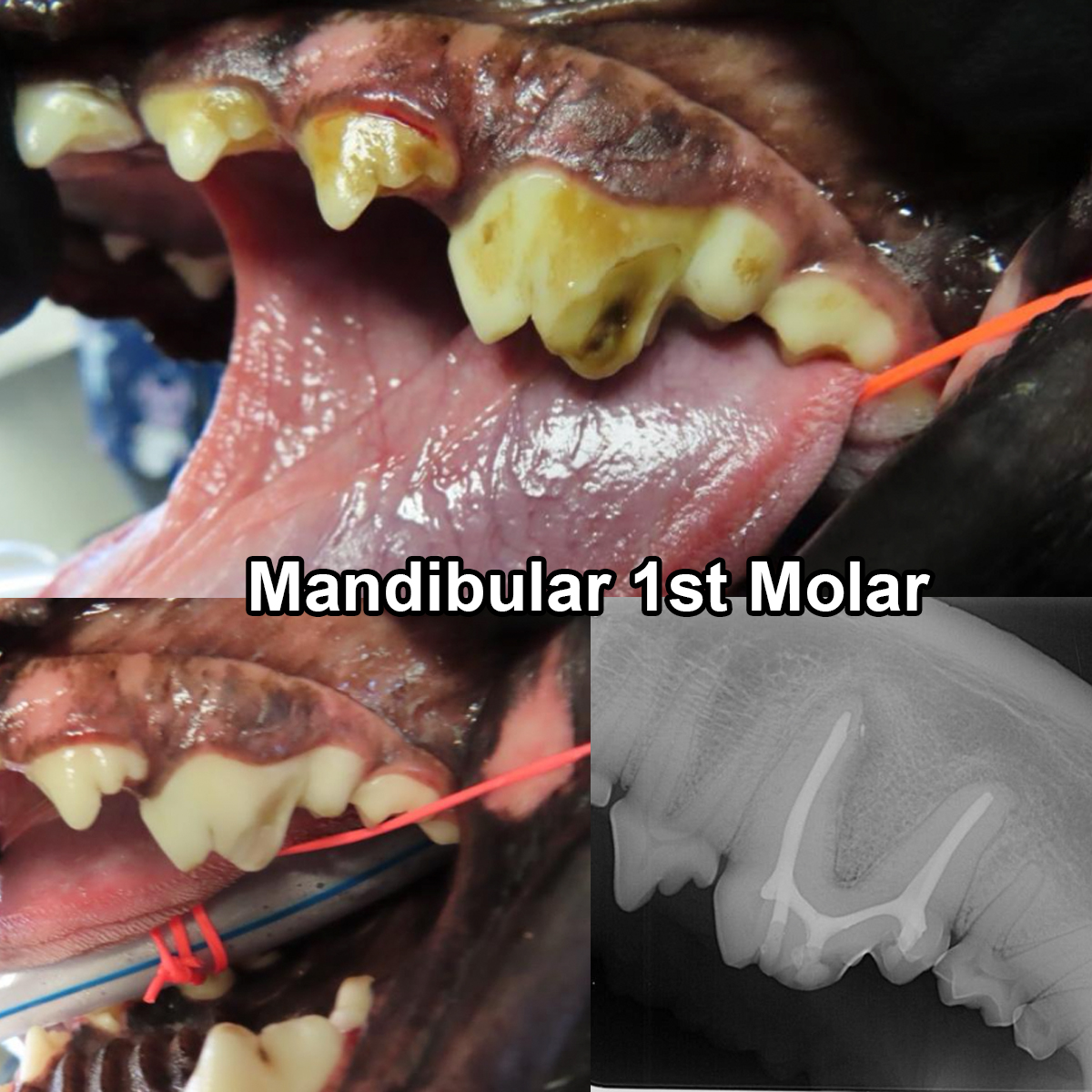Your dog or cat has a broken tooth and you’ve been advised that it needs to be pulled. HOLD ON!!! Not all broken teeth need to or should be extracted. There may be another option to save the tooth and avoid oral surgery. Before we get into options, let’s first discuss the two major types of broken teeth.
The first type of broken tooth is called a complicated crown fracture. With this type of fracture enough of the tooth was lost to expose the inside of the tooth which is called pulp. Pulp is made of nerves, connective tissue, blood vessels, and other cells. Exposed pulp is very painful. I have spoken with many human dentists about the severe pain a human broken tooth can cause. Pet teeth have the same nerve innervation as human teeth and feel the same pain without being able to tell their owners. The majority of pets will continue to eat normally despite being in pain – they will not starve themselves or alert even the most observant owner. The next problem with exposed pulp is that there is 100% chance it will become infected. This infection over time leads to damage and destruction of surrounding bone. Most of the destruction occurs around the root of the tooth and is hidden from an oral exam. Imaging under general anesthesia is required to detect the damage.
The second type of broken tooth is called an uncomplicated crown fracture. This type of fracture exposes dentin but not pulp. Dentin is the tooth structure below enamel and above pulp. Unlike enamel, dentin is a porous structure that senses cold, heat, and touch. Uncomplicated crown fractures require a detailed exam and imaging to determine what type of treatment is needed. Some uncomplicated crown fractures may not require any immediate treatment and only annual imaging. Some may only need the application of a bonded sealant and annual imaging. Close to 30% of complicated crown fractures lead to a non-vital (dead) and infected tooth and require either surgical extraction or root canal therapy. Imaging is a must for all uncomplicated crown fractures.
There are only two options for a complicated crown fracture. One of those options is NOT to keep an eye on it, or monitor it, or watch and wait. We already know the tooth hurts and our pet cannot tell us they are in pain. Waiting allows our pet to suffer in silence while bone is being destroyed out of our view.
The first option is oral surgery to extract the tooth. Removing the tooth will alleviate the chronic pain and avoid future bone destruction. Surgical extraction involves a nerve block, creating a soft tissue flap to expose bone, removing some bone to enable complete root removal, and suturing closed (absorbable sutures only) a tension free flap. Pets are discharged on 5-7 days of pain medications, placed on a soft diet for 10-14 days, and are restricted from toys and hard chews for 10-14 days while their surgery site heals. Unlike humans, remaining teeth do not shift following extractions. After surgical healing pets do very well with extracted teeth.
The second option is root canal therapy. Performing a root canal saves the remaining tooth structure and avoids oral surgery. Before a root canal can be performed it must qualify for the procedure. Qualifying a tooth requires a detailed oral/tooth exam and imaging. Simplified, a root canal involves a nerve block, removing all remaining infected pulp, sterilizing the inside of the tooth, filling the root canal with an inert material, and sealing the tooth to prevent bacterial invasion. Patients do not require any medications, diet change, or oral restrictions post-op. Root canal therapy is a little more expensive than oral surgery and requires annual follow-ups with imaging to ensure the pet hasn’t damaged its restoration and there is no evidence of root canal failure.
Dogs have 42 teeth and cats have 30 teeth. In dogs, root canal therapy can be performed on any tooth that qualifies. However, 10 specific teeth in dogs are the most common for this procedure. These teeth are the four canines, two maxillary 4th premolars, two mandibular 1st molars, and both maxillary corner incisors. These 10 teeth are the largest and most important dog teeth. In cats, due to the smaller size of their teeth and greater procedure difficulty, root canal therapy in generally only performed on the four canine teeth.
In summary – pets seldom show signs of oral pain. A complete oral exam should be performed at least annually. If a broken tooth is identified on oral exam quality images needs to be obtained. Not all broken teeth need or should be extracted.
Below are before and after images of four different dog teeth that received root canal therapy.



